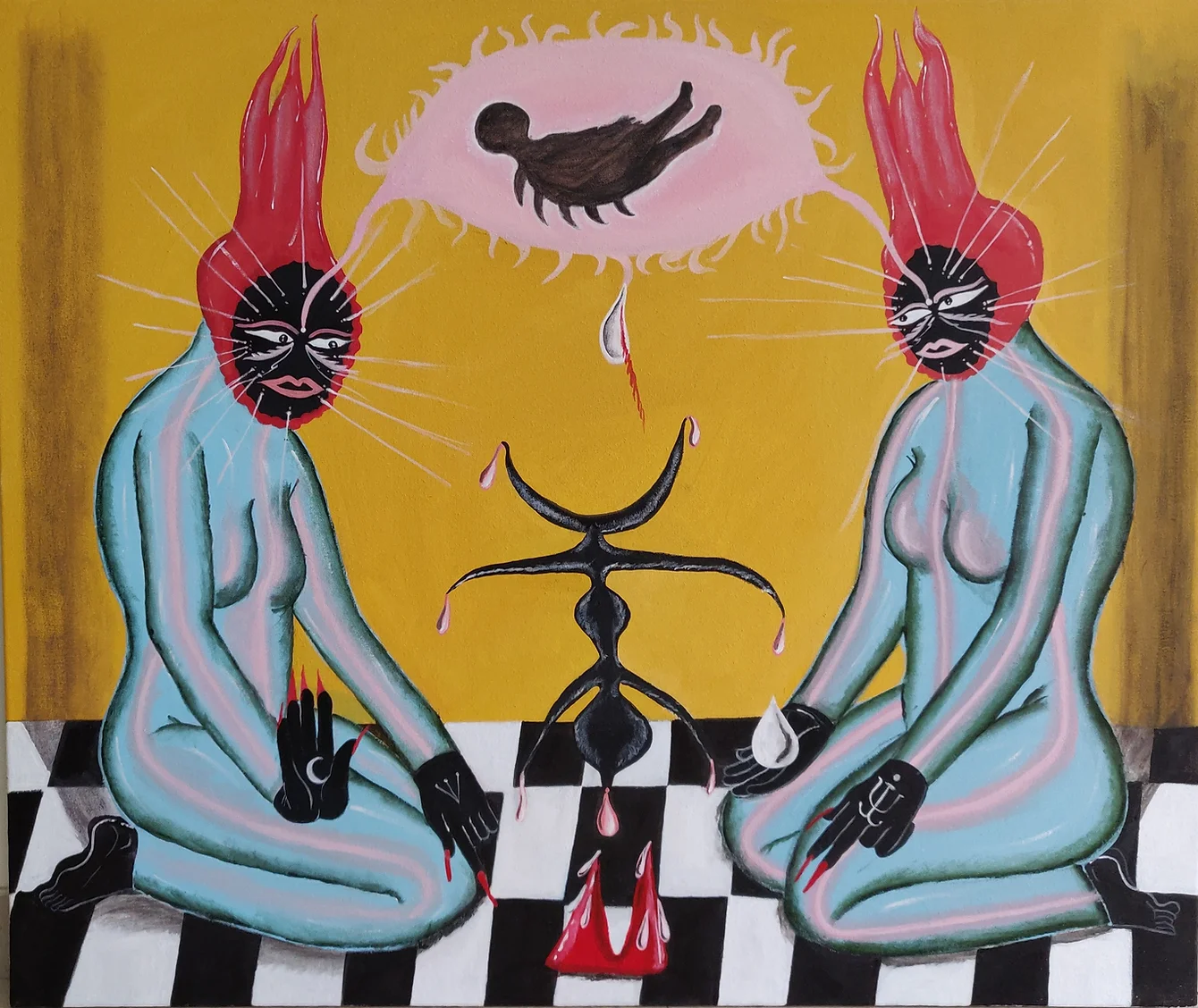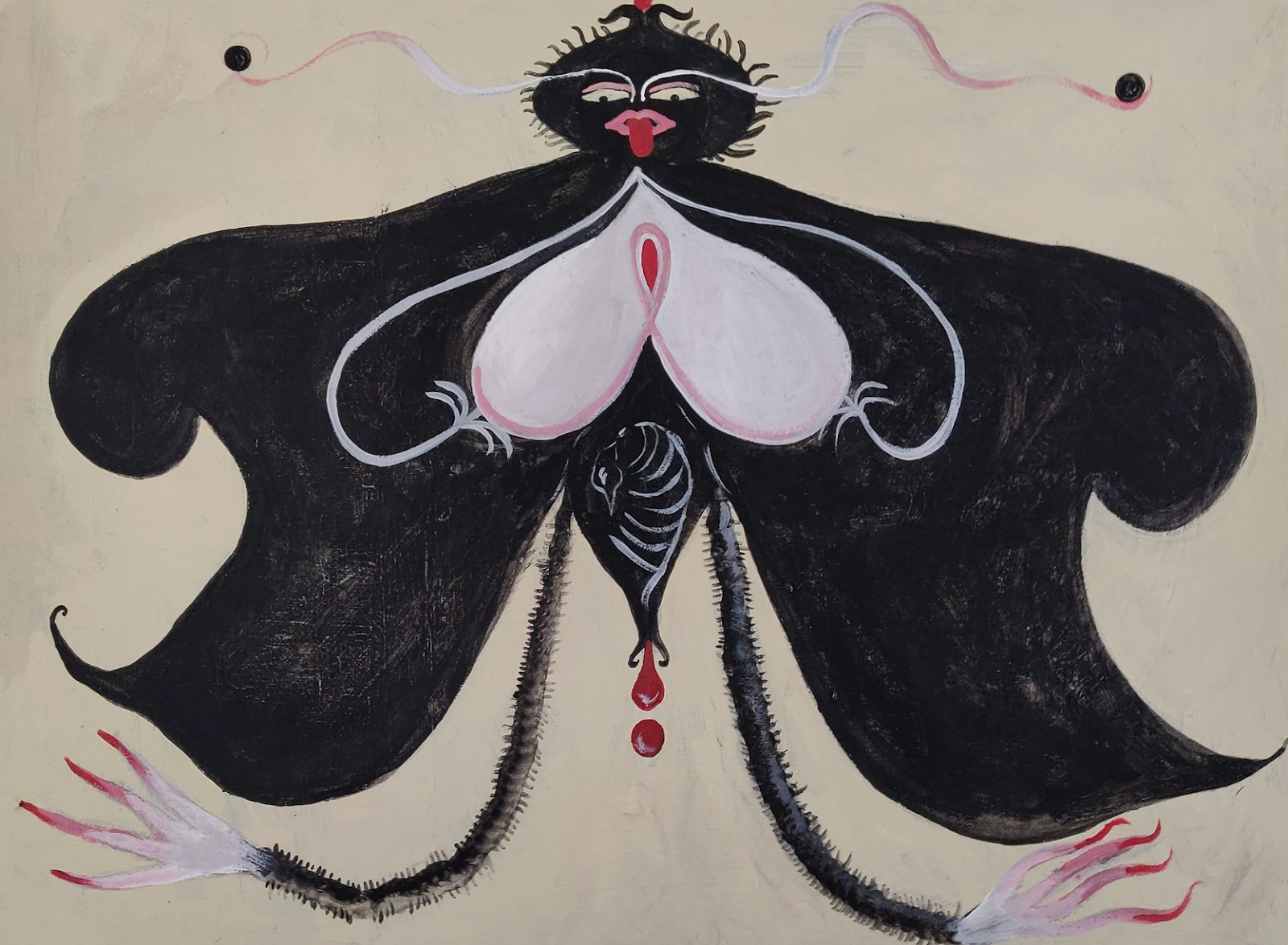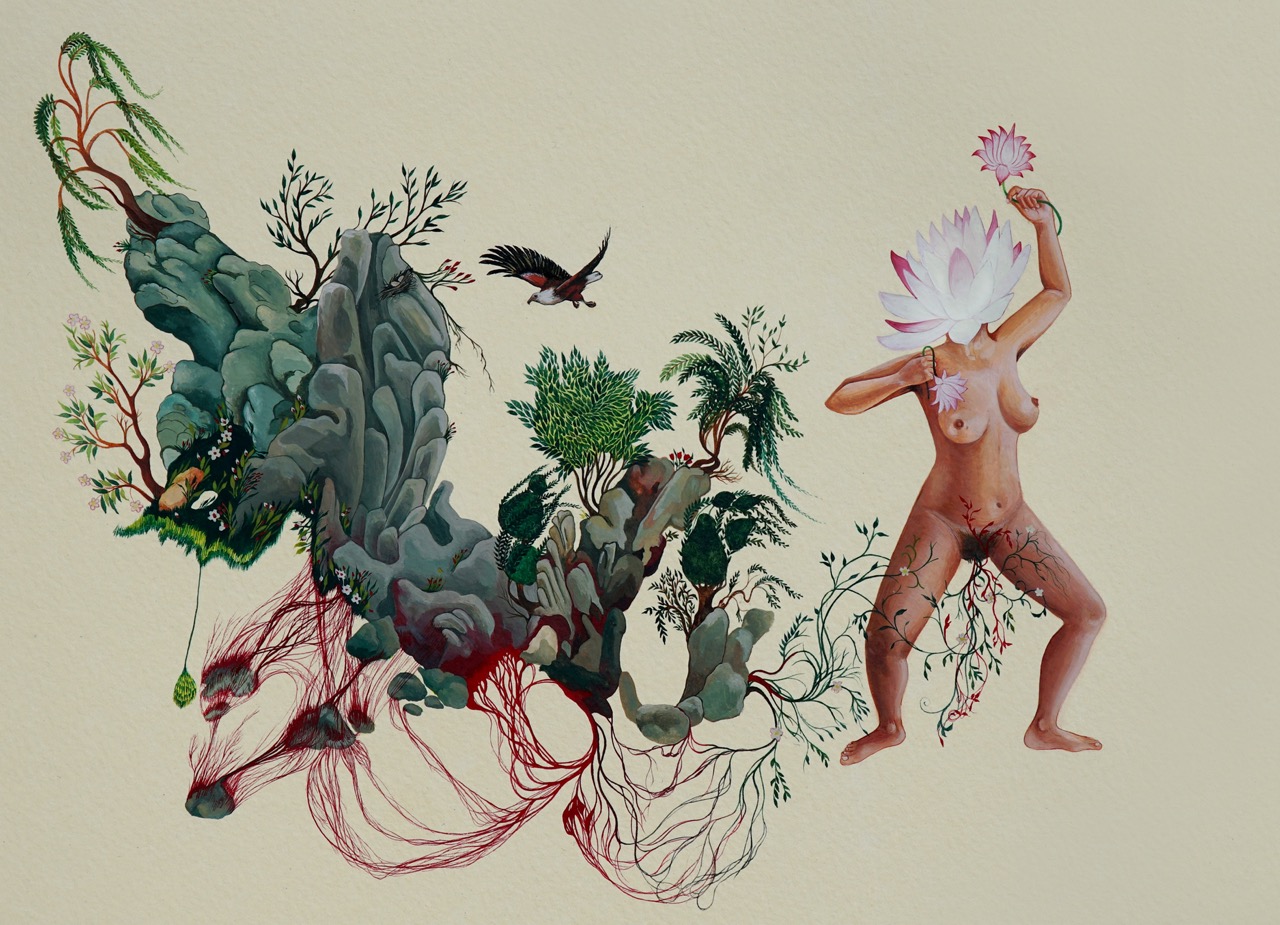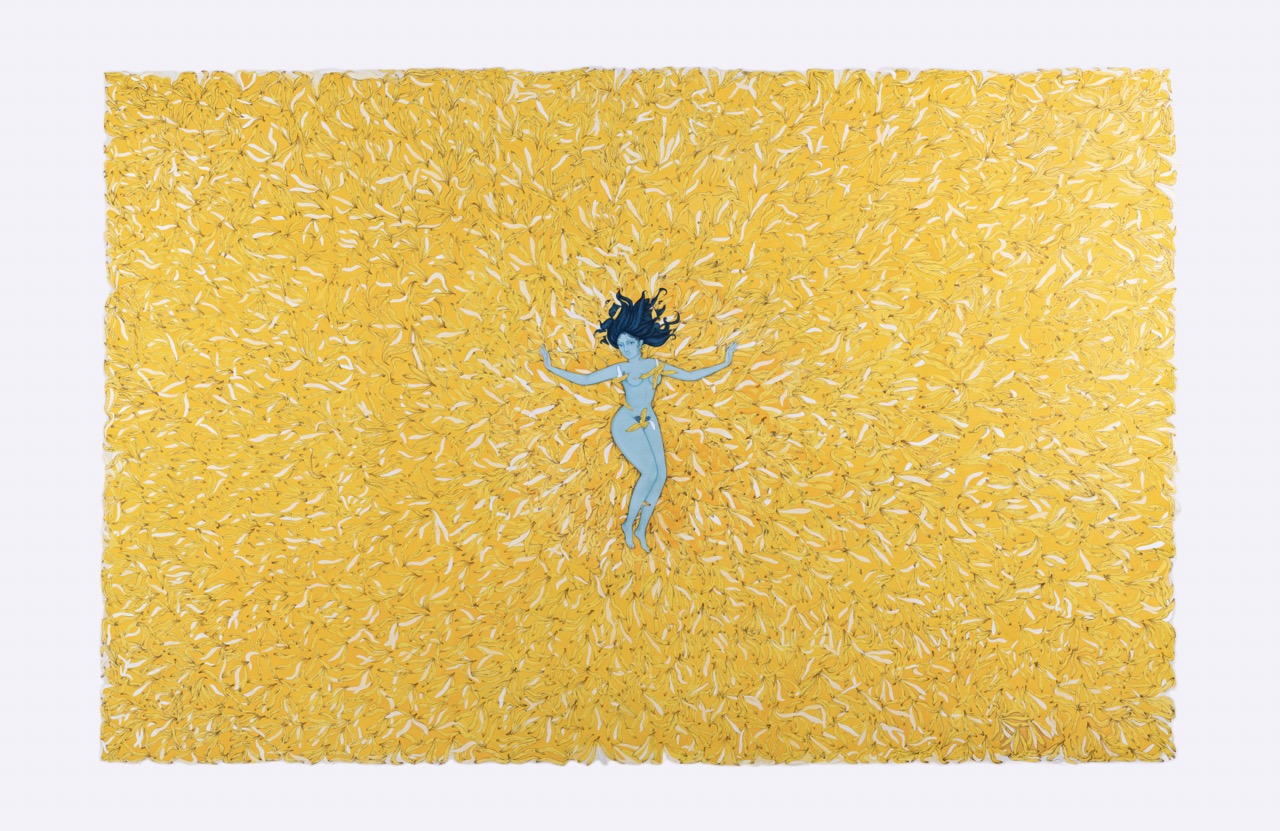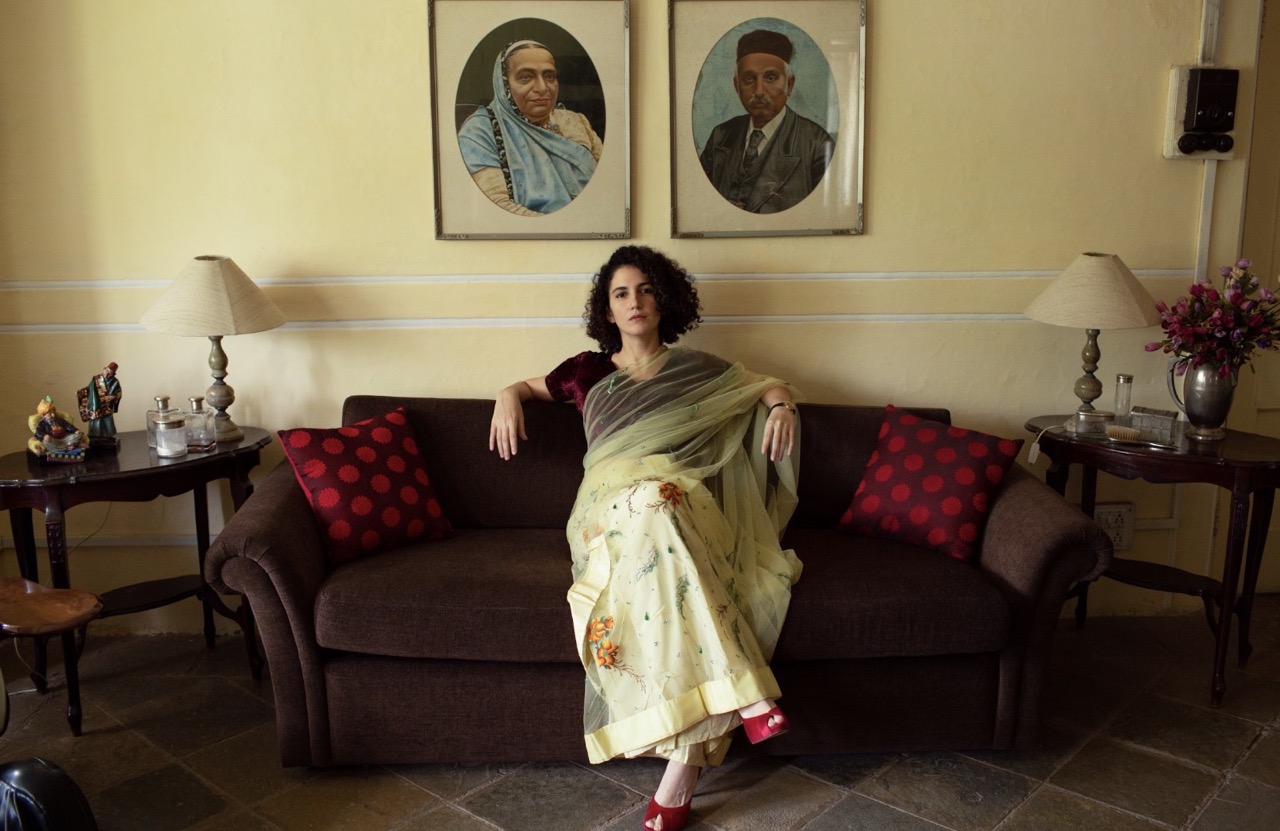In Rithika Pandey’s world, supernatural characters, tentacled flowers, and peculiar animals come to life against vibrant backdrops. While nature serves as her starting point, there’s more than meets the eye on her canvases. In an insightful chat with the Mumbai-based contemporary visual artist, we talked about what fuels her world-building, the crisis of the feminine, and how she keeps her creativity alive.

‘The filigree of eternal possibility’
Much like the layers within her artworks, Rithika’s inspiration is a fusion of traditional painting styles and contemporary influences.
Her paintings reflect echoes of Indian miniatures, bold compositions reminiscent of Tantric paintings, and an infusion of science fiction theories. This eclectic blend creates a unique, future-facing art style—one that is both allegorical and refreshingly original.
An avid reader, she immerses herself in everything from Hindu mythology to Bell Hooks’ feminist works to Ursula K. Le Guin’s speculative fiction novels. They inform her art, forging a narrative that visually and intellectually captivates the viewer.
One intriguing narrative the artist explores in her work is the crisis of the feminine.
Rithika recently gave an 18-minute performance lecture at NorBlack NorWhite’s flagship store. The presentation blended spoken word, poetry, and prose to explore the lack of the feminine essence in art and society.
As she puts it, the feminine essence is a sensuous, nonviolent energy—an influential force capable of healing and nurturing. She eloquently draws parallels between the feminine forces of creation and creativity. Creativity has the power to expand the world rather than dismantle it — making it inherently effeminate.
Several of Rithika’s notable works, such as the evocative Womb Series, are brimming with the feminine essence. Often using the symbolism of wombs, births, and goddesses, these works show how the feminine transcends sexuality. Here, the feminine is a life-affirming connective tissue that grows between two entities. It is also a space for reciprocity and mutual transformation.

‘Ritual for Pre-Initiation’.

‘The Ancestress emerges from a sea of milk that was once my Home’
Rithika builds a world where the feminine essence takes centre stage, offering us a glimpse into her vision for the future. Often, discussions about the future revolve around a narrative dominated by technology—a world of megaprojects, flying cars, and sentient AI. This narrative undervalues human coexistence with the natural world. Recognising this imbalance, Rithika emphasises the urgent need for a more inclusive, feminine approach that protects our connection with other life forms.
Rithika’s world-building art is an age-old form of storytelling similar to that of fantasy novels or video games, complete with characters, plots, and themes.
Someone who created imaginary friends as a child, Rithika first encountered world-building in art through Ian Cheng, an American contemporary artist known for his “virtual ecosystem” artworks. Each of her paintings serves as a portal into meticulously crafted worlds. They invite the viewer to immerse themselves in a realm with non-human protagonists, a distinctive visual language, and its own rules of order and chaos.

‘A note on Origin’
When asked about the rules of her imagined world, she ponders for a minute and says: “Change”. Quoting American author Octavia Butler, she elaborates “All that you touch, you change. All that you change, changes you.”
Remember how the feminine essence allowed for mutual transformation? In Rithika’s feminine, future-facing world, characters are not static entities. They shape the environment they inhabit and in return, are transformed themselves. This dynamic between the protagonist and their environment mirrors the artist’s relationship with the world.
Describing the artist’s relationship with the world, Rithika offers us this – “If the scientist’s role is to solve the mystery, the role of an artist is to continue the mystery.”
As an artist, she views herself as a steward of imagination. While she respects the vulnerability of studio practice, she refutes the idea that artists create works in a bubble. Connection is vital—with nature and with other people. In her view, it is through these connections that artists have the ability to “conjure worlds collectively.”
It is a romantic idea that an artist is not a mere producer of art but someone deeply engaged in the act of existing in the world. Artists, she believes, have the freedom to embody various identities, allowing creative energy to flow through them. It is in this fluidity that transformation takes root.
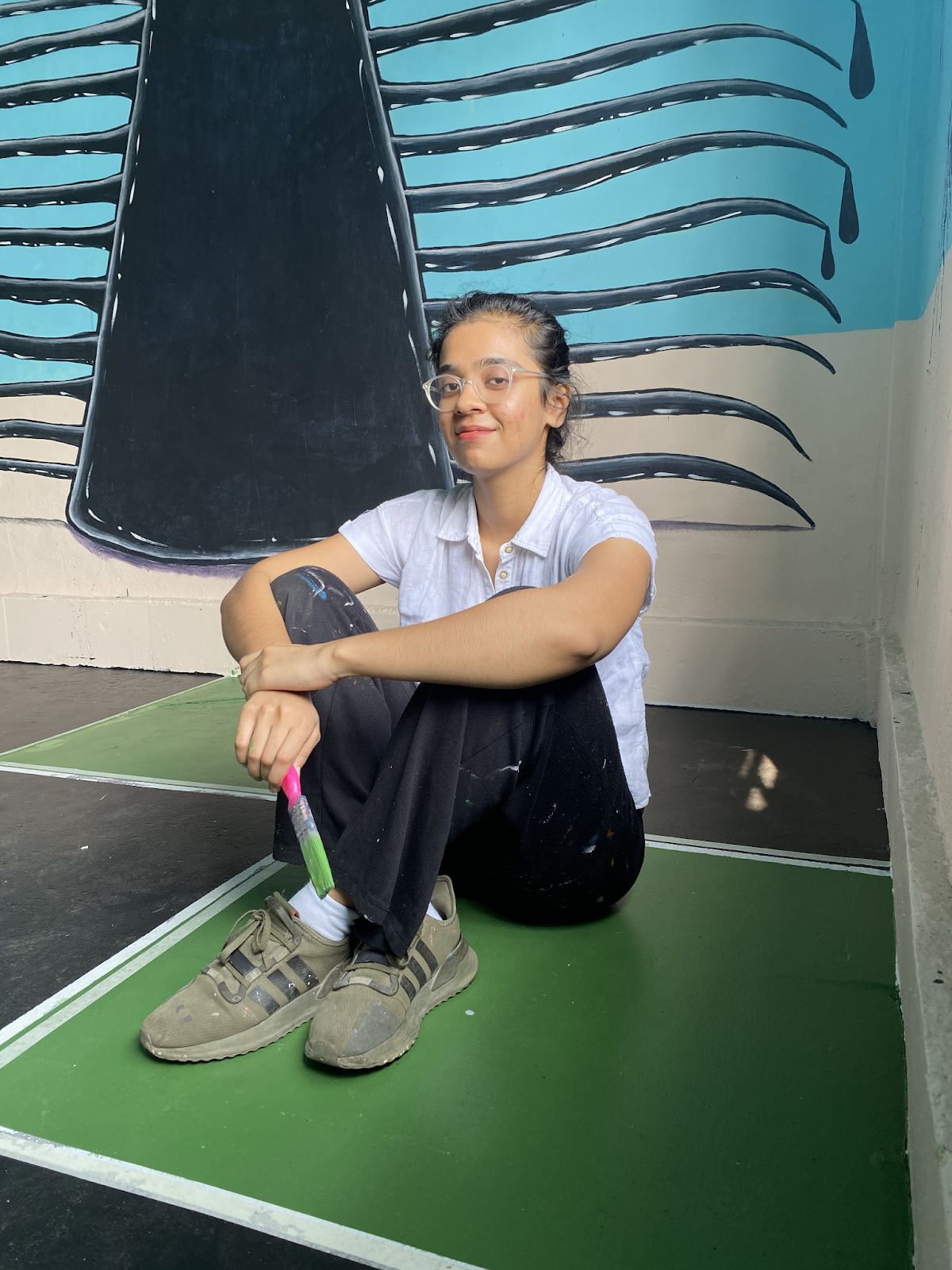
Rithika Pandey in front of her artwork at the Mumbai Urban Arts Festival at Sassoon Docks
However, feeling connected to nature can be hard in Mumbai’s highly urbanised world. The constructed, hyper-developed ecology affects everyone—artists, perhaps more so. When you can’t see the sky, how do you open your mind to the cosmos? When that life-affirming natural connection is taken away from us, it affects our imagination—which the artist believes is the highest form of our agency. We couldn’t agree more.
To counteract the limitations of an urban environment, Rithika finds solace in travel, whether to Goa or her creative sanctuary, the Isle of Skye in the Scottish highlands. They as crucial retreats, allowing her to feel creatively safe and abundant. As she leans into being an artist, she also leans on the people around her with whom she can safely and freely share her imaginations and anxieties.
If art doesn’t exist in a bubble, neither do the artists who bring it to life—and Rithika is a wonderful proof and reminder of that.
Rithika Pandey’s solo exhibition, ‘The Knowing is Indivisible,’ is on view at Silvia’s Mother in London until 10 March.
Get to Know Rithika Pandey
Describe your art in 3 words: Transformational, Loving, Wild
Favourite artist: Olafur Eliasson
What are you listening to currently? Ravi Shankar’s Morning Ragas
The last exhibition you saw? Rekha Rodwittiya’s ‘We are meant to survive …beyond our stories’ and Kuldeep Singh’s ‘Nakhra: Towards a Sacred Sensuality’
Your advice for new artists? Learn how to articulate your art through language and take agency of your work.
